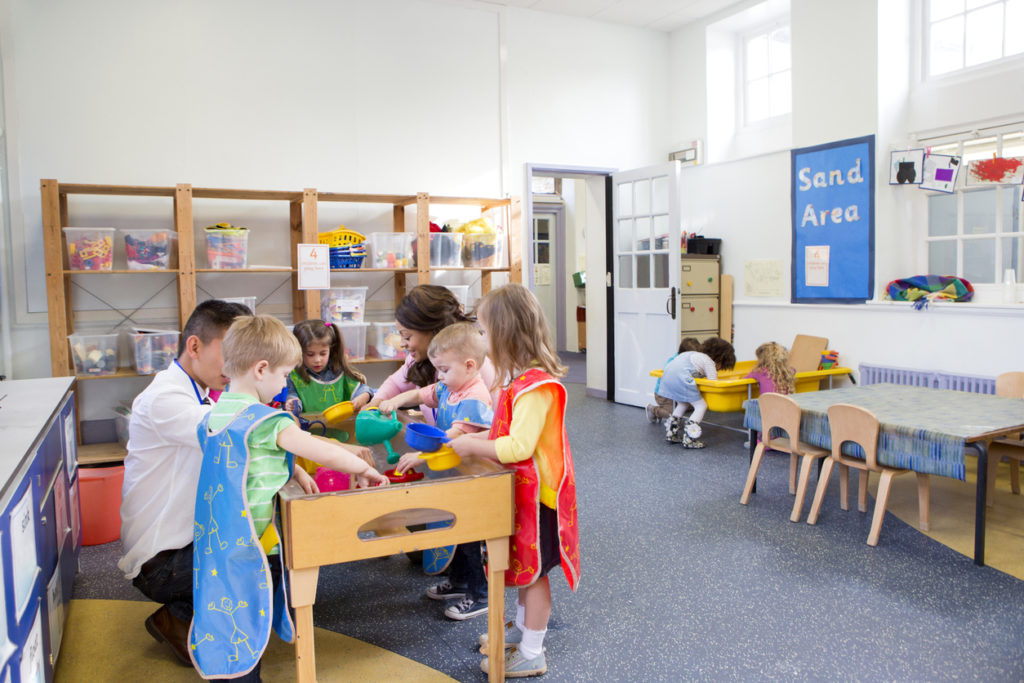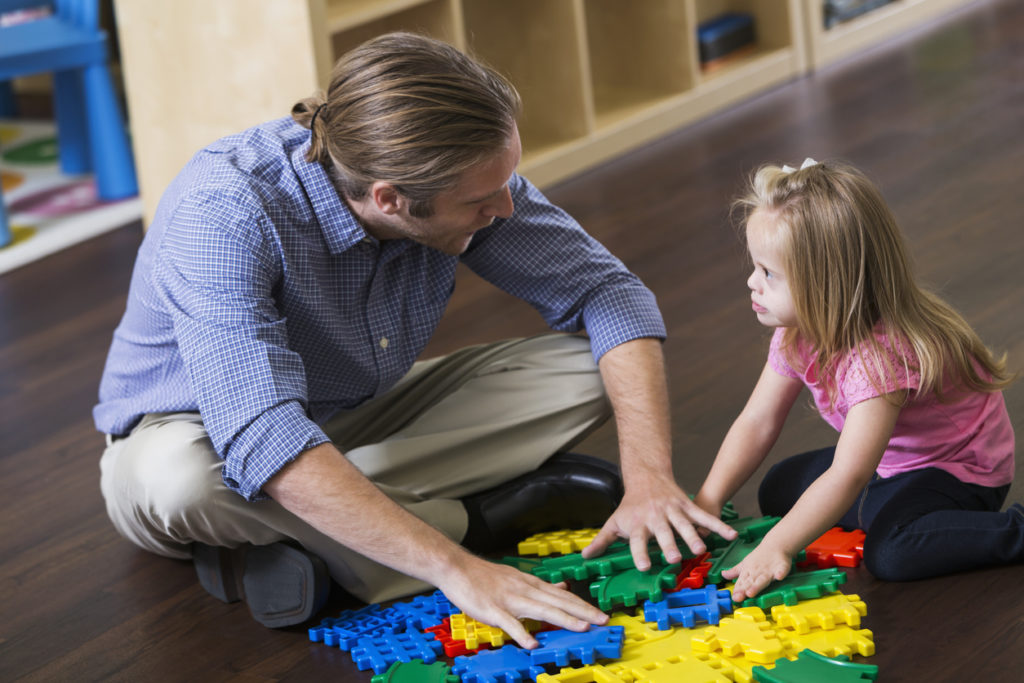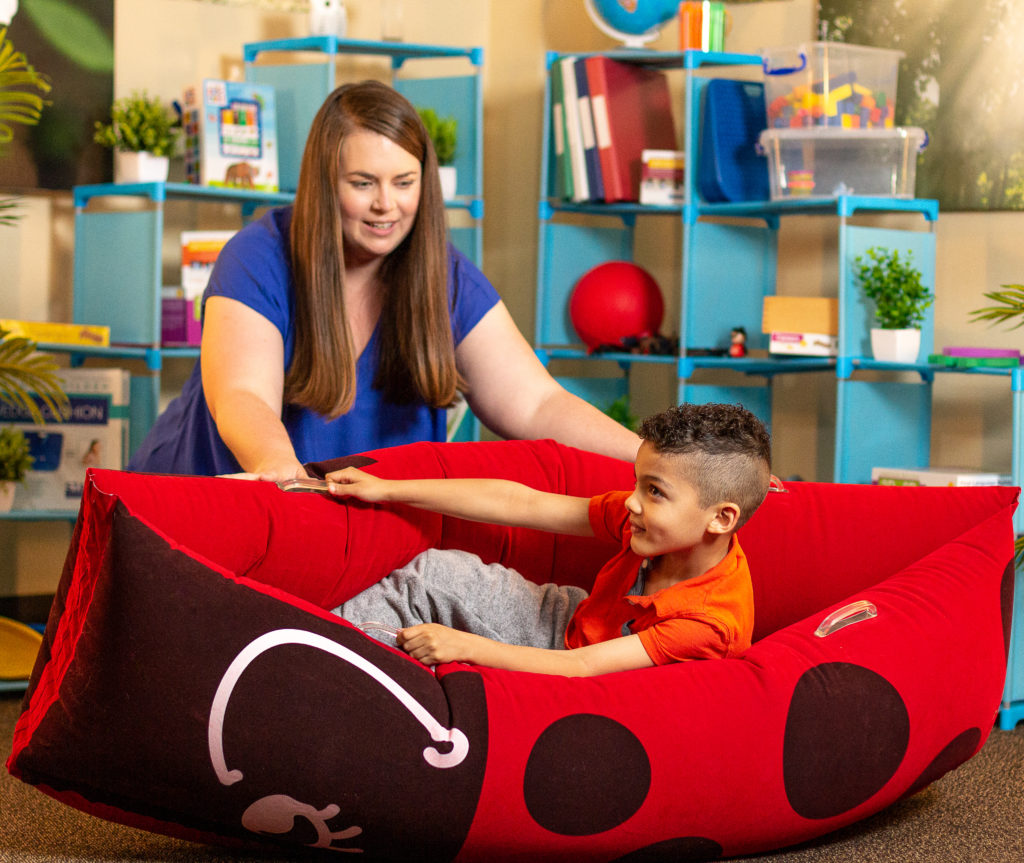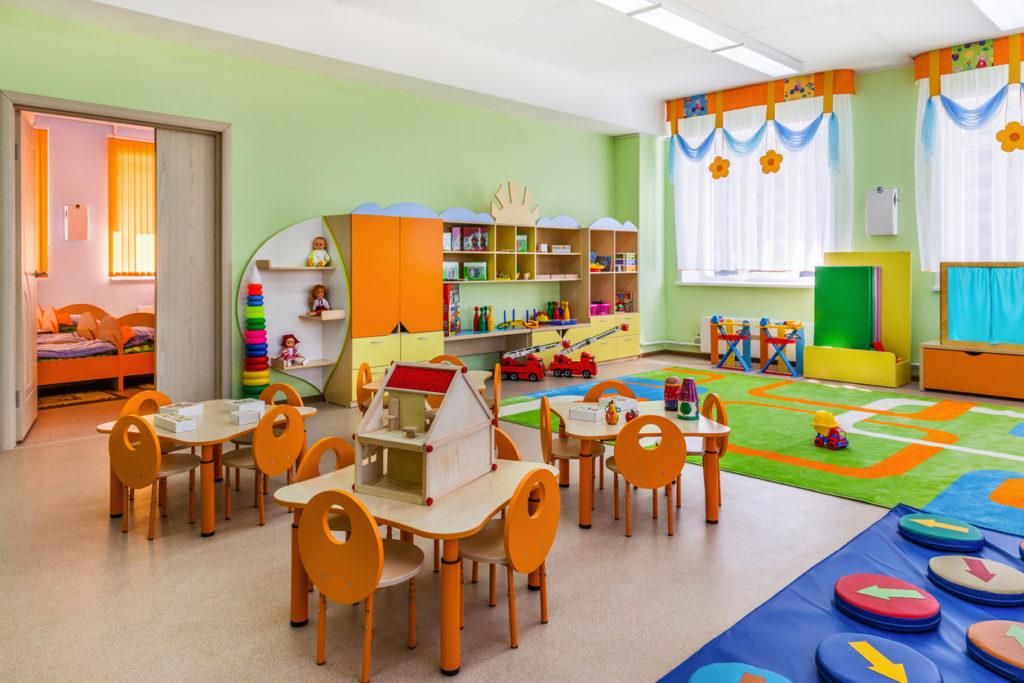A great deal has changed in how we support autistic and special needs students in the classroom. The language has changed, the teaching approaches have changed, classroom inclusion practices have changed, and classroom design practices have changed to reflect new research on more effective ways to support children with special needs.
To understand how best to provide furniture and classroom structures to support neurodiverse students — including those with autism, disabilities, and learning differences — the first step is to understand the new language and teaching approaches.

New Language
The term neurodiversity was created in the 1990s to reflect new research about autism and other learning differences. Neurodiversity reflects our understanding that there is no one “right” way of thinking or learning and that differences do not need to be viewed as deficits. While the term neurodiversity can be applied to everyone, it is often used in the context of supporting autistic students and those with other learning differences.
There has also been a shift in the language used for autism. While some teachers and professionals still use “person first” language such as “student with autism,” more and more autistic teens and adults prefer “identity first” language such as “autistic student.” Like the deaf and blind communities before them, many autistic people feel that “identity first” language is a way of saying “we are proud of who we are, you need to respect our identities, and we are different but not disabled.”
New Teaching Approaches and the Rise of Inclusive Classrooms
The changes in language reflect a change in our understanding of learning differences and how we approach all students to support learning. Universal Design for Learning (UDL) is an approach to teaching that is used to optimize teaching strategies and classroom design to support all types of learners. UDL embraces the understanding that all individuals learn differently and that by customizing the learning experiences for each student by building options and flexibility into instructional practices and classroom design we can optimize learning for everyone.
The use of inclusive classrooms is on the rise as educators have come to realize there are many benefits to children with learning differences and to more neurotypical children in learning together. At the same time, there is still a strong need for special education classrooms for children with severe learning disabilities and for children with less severe needs to receive additional support. While the vast majority of students with disabilities now spend 80 percent or more time in general education classrooms, most students with disabilities still spend some time in special education classrooms.[i]
New Trends in Classroom Design for Neurodiverse Students
There is a growing demand for newly designed physical spaces and furniture for neurodiverse students for general and special education classrooms. Implementing new teaching strategies such as UDL include redesigning all classrooms to create sensory friendly spaces, flexible furniture, and physical and visual structures to better support learning for all students.

Create Sensory Friendly Classrooms
Many neurodiverse students also have sensory processing disorders that impact their ability to learn. To reduce over-stimulation or under-stimulation, sensory designs need to allow for a great deal of flexibility so that teachers can make choices depending on the needs of their students.
Bright lights and loud noises can be minimized by using floor lamps, room darkening curtains, and small carpets or carpet squares. The color of furniture and storage containers can provide feelings of calm and comfort by using tranquil colors such as blues and greens and avoiding bright colors. Carpet squares that can be organized by color, number, animal or other sorting features can evoke feelings of order and provide for smoother transitions.

Cool down areas can range from small inflatable “snug bugs” designed to enclose one child in a canoe-like soft structure to provide a calming “hug” to elaborate wooden structures that incorporate several types of areas to help children avoid meltdowns. These cool down spaces can provide supports such as fidget tools, noise cancelling headphones and comfy seating while also providing items such as mini trampolines for children who need to let off some steam.
Provide Flexible Furniture and Spaces
Teachers want flexible options so that they can arrange and re-arrange their classrooms, not only year-to-year, but throughout a single day. Research indicates that the intentional design of physical learning environments can enhance student outcomes.[ii]
Autistic students and students with ADHD, in particular, struggle with sitting still and staying on task in class. Flexible seating provides students with different seating options so that they can choose what works best for them. Therapy ball chairs in particular work with many students to increase in-seat behavior and facilitate learning. Teachers have also found yoga balls, wobble chairs and cushions, wobble stools, bean bag chairs and scoop chairs and scoop rocking chairs to be effective for some students.

Flexible desks include standing desks, lap desks, and easels that can provide students with different options that meet their needs. All furniture — chairs, tables, desks and storage spaces — needs to be easy to move so that teachers can reconfigure their classrooms as needed. Carpet squares are highly valued by teachers because they provide ways to flexibly establish different stations or activity areas in the classroom with these visual and tactile cues.
Create Physical and Visual Structures to Cue Attention
A supportive classroom environment needs to include intentional organization and structure to support on-task behaviors whether students are in an inclusive setting or a special needs classroom. Cueing students about what activity they need to be engaged in and minimizing distractions can help support student learning.

Shelves, dividers, cabinets and storage bins can provide physical boundaries to establish areas for gross motor play or quiet activities. They need to be easy to move around but also sturdy enough to be safe for active students. A recent survey of teachers in autism classrooms found strong preferences for wood rather than metal furniture for noise reduction.[iii]
There is a clear and growing interest in ways the built environment can better support learning for all students with the increased recognition that physical spaces can greatly impact learning outcomes.
References
[i] National Center for Education Statistics. (2022). Students With Disabilities. Condition of Education. U.S. Department of Education, Institute of Education Sciences. Retrieved [date], from https://nces.ed.gov/programs/coe/indicator/cgg.
[ii] There are many studies demonstrating that the physical environment can enhance pedagogy, especially for neurodiverse students. The following citation – though focused on studying flexible seating – provides a comprehensive review of the research in this area: Attai, S.L., Reyes, J.C., Davis, J.L. et al. Investigating the impact of flexible furniture in the elementary classroom. Learning Environ Res 24, 153–167 (2021). https://doi.org/10.1007/s10984-020-09322-1
[iii] Kanakri, S. M., Shepley, M., Varni, J. W., & Tassinary, L. G. (2017). Noise and autism spectrum disorder in children: An exploratory survey. Research in Developmental Disabilities, 63, 85-94. doi:10.1016/j.ridd.2017.02.004

